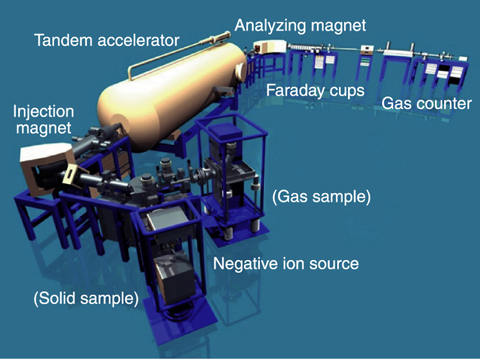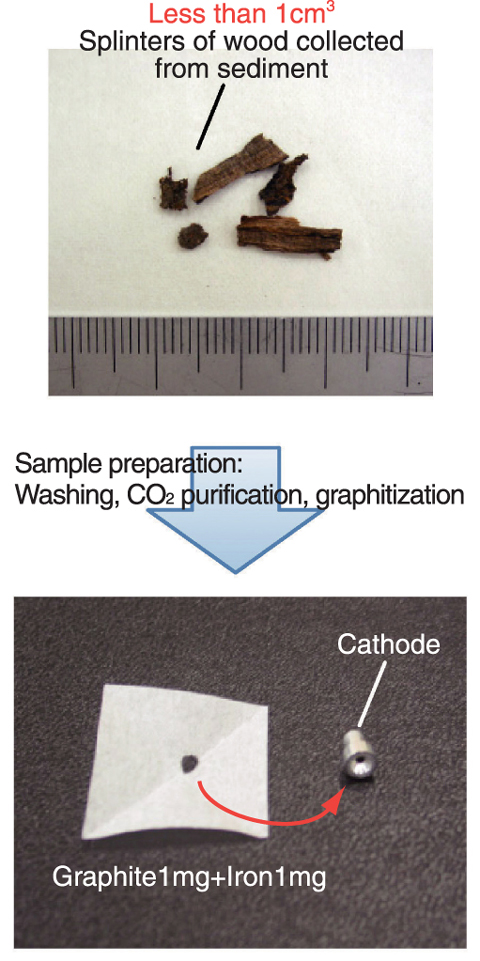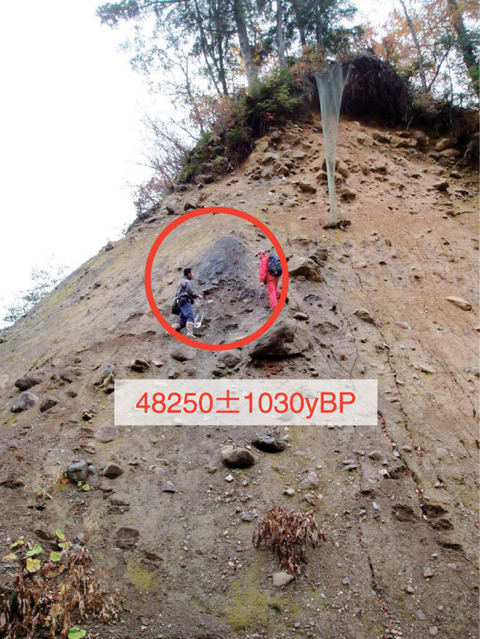
Fig.2-12 Outline of pelletron dating instrument

Fig.2-13 Preparation of a measuring sample

Fig.2-14 Gravel beds at the upper reaches of Azusa River and sample collection place
Radiometric dating method is used to study when past geological events such as earthquake and volcanic activity occurred. The method using radiocarbon is based on the rate of decay of 14C (T1/2=5730 y), which is formed through the effect of cosmic ray neutrons upon 14N. This method is one of the most powerful methods of dating from modern times back to about 60,000 years ago. As plants and animals utilize carbon for photosynthesis or respiration during their lifetimes, they exist in equilibrium with the concentrations of carbon isotopes (12C, 13C and 14C) of the atmosphere. After the plants or animals die, 14C in them only decay. A measurement of the 14C content of a sample can provide a determination of the sample's age.
By using an accelerator mass spectrometer installed at the Tono Geoscience Center (Fig.2-12), the number of 14C atoms in 1mg of a carbon sample can be measured. The advantage of the AMS method is that a smaller amount of the sample is sufficient for dating than with radioactivity measurement. For example, a few hundred liters of groundwater was required to measure 14C by the radioactivity measurement. On the other hand, measurement of about 1 liter of the sample by the AMS method can provide the same level of precision. Therefore, utilization of the AMS method enables us lighten our burden of sample collection and measure a small sized sample.
In the prediction of future changes in a geological environment being considered for geological disposal, it is necessary to understand their history of geological events. For example, in studies of formational process of river terrace and plain, and development process of an active fault, carbon in 1cm3 of a wood chip or a shell collected in sediment was measured to determine depositional age (Fig.2-13). We studied the terrace along the Azusa River between Matsumoto and Kamikouchi in Nagano. Concentrations of 14C in fossils of wood chips collected at gravel beds were measured. These results indicated that these beds were deposited 48,000 years ago (Fig.2-14). This accurate formation age of this terrace is basic information needed to understand changes in the flow upstream of the Azusa River and the evolutional history of geographical features around this area.
Radiocarbon dating by the accelerator mass spectrometer can be used to measure geological sample containing carbon such as wood chips, bones and ground water. We have made use of this method to get an understanding past geological events, which we need for the prediction of a future changes in the geological environment. Moreover, we will develop dating method of 10Be etc.